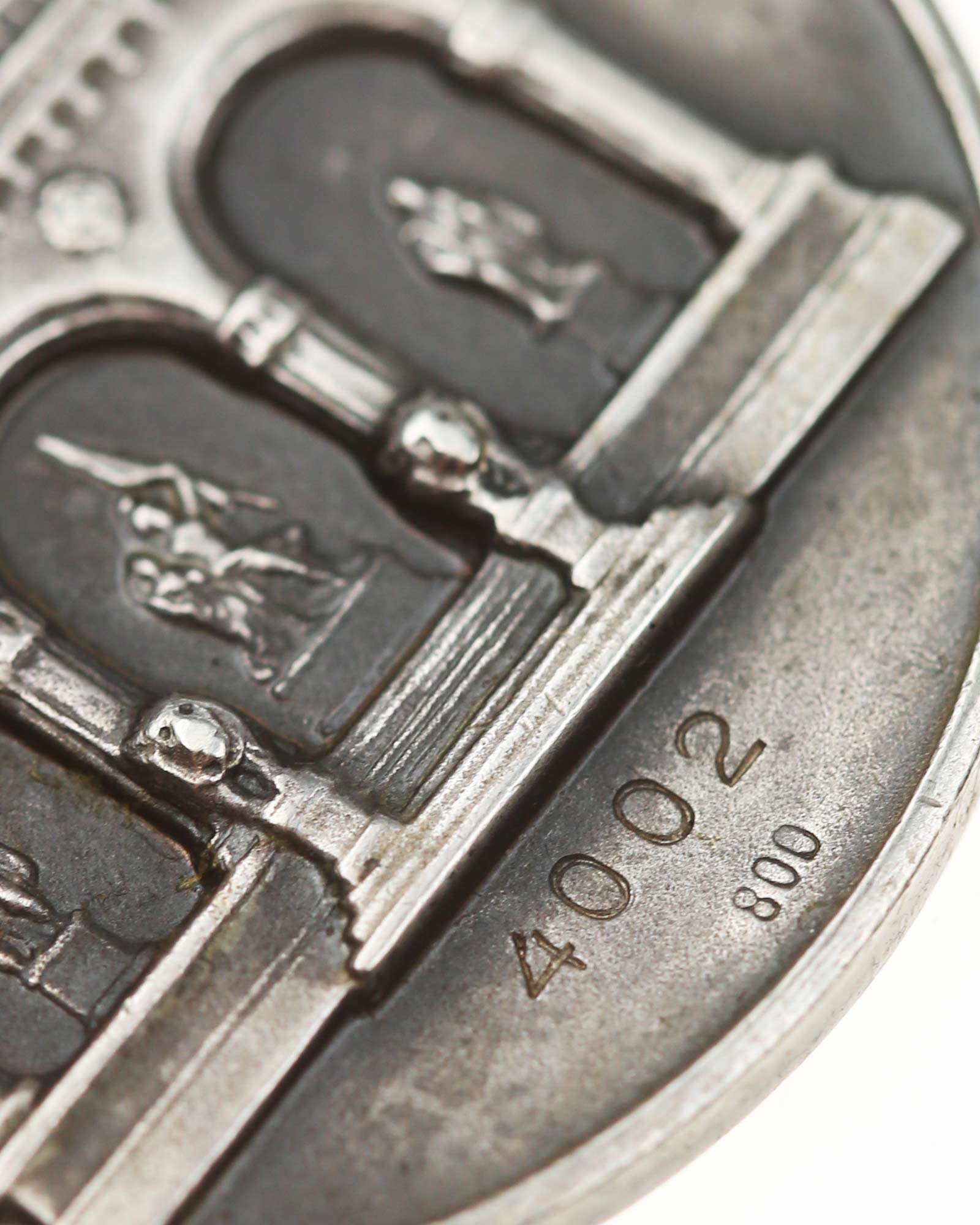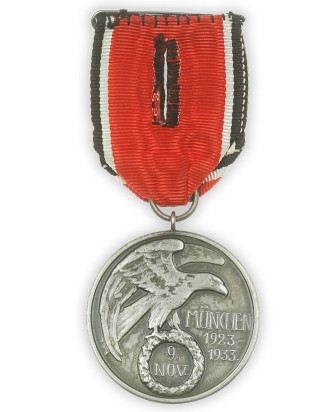Historical Background: Medal of 9 November 1923 (“Blood Order”)
The Medal of 9 November 1923, better known as the “Blood Order”, was instituted by Adolf Hitler in 1934 to commemorate the tenth anniversary of the failed “Beer Hall Putsch” of 1923. It was regarded as the highest decoration of the NSDAP, ranking above the Golden Party Badge.
The first issue (1st Model, 1934–1935) was awarded to roughly 1,500 participants in the so-called “March to the Feldherrnhalle”. With the resumption of awards on 30 May 1938 (2nd Model), eligibility was extended to those who had served the NSDAP before 1933 and had endured at least one year of imprisonment for their political commitment.
The second model was struck in 800 fine silver and bears on the reverse the Feldherrnhalle in Munich with the raised inscription “UND IHR HABT DOCH GESIEGT” (“And yet you have triumphed”), together with the individual award number and silver hallmark. Known serial numbers extend up to about 4300, while official records end in 1942.
The design reflected the ideological message of perseverance and martyrdom within the Party’s mythology. Today, original Blood Orders are considered among the rarest and most coveted NSDAP decorations, especially examples retaining original patina and period ribbon.








 Exclusive offers 10 € voucher when you sign up to our newsletter.
Exclusive offers 10 € voucher when you sign up to our newsletter.


